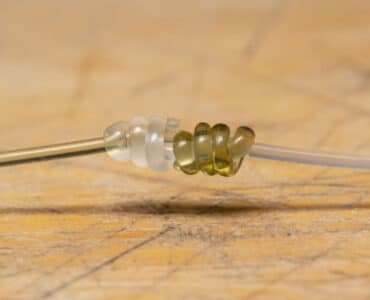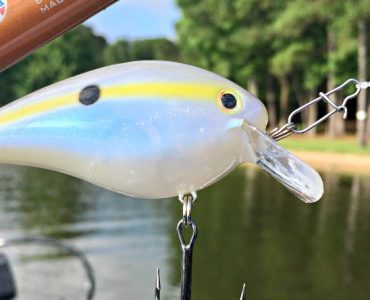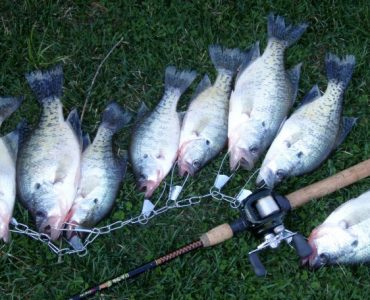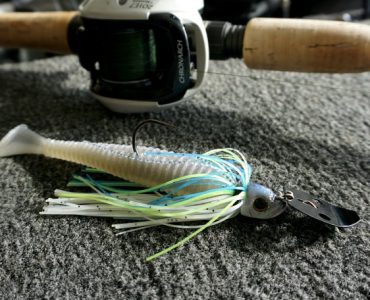The Palomar knot is one of the fastest, easiest, strongest fishing knots you can learn to tie. Once I learned how to tie the Palomar knot correctly, I quickly recognized how much an effective knot it could be.
I literally cannot think of a time this knot has failed me. The line will break or the hook will bend out before the knot fails. It might be the best all-purpose fishing knot for all types of line.
The Palomar is my go-to fishing knot for nearly every bass fishing application!
But for some reason, many anglers struggle to properly tie this knot and experience frustrating knot breakage. This guide is going to teach you the right way to tie this knot, and the fishing situations you can use it.
Advantages of the Palomar Knot
- The standard Palomar maintains nearly 100% original line strength
- Works great on all types of line – Good for mono, fluoro, or braid
- Can be used to tie directly to all types of hooks, lures, and terminal tackle
- One of the easiest fishing knots to master
- One of the most reliable fishing knots when properly tied
- Efficient knot to tie on the water in any conditions
- Great knot for tying a drop shot rig when you use a long tag end
How to Tie a Palomar Knot – Step by Step
- Pass the line through the eye of the fishing hook (or snap or split ring on the lure), then gently hold the line at the eye.
- Pass the tag end of the line back through the hook eye, leaving a small loop. You should be holding the tag end in your left hand and the loop in your right with the hook hanging in the middle.
- Bring the loop up under the mainline and tag end, wrap it up, and through the newly formed loop, forming an overhand knot. Check that there are no crossed or twisted strands of line.
- Now take the loop and pass the hook or lure through the center, bringing it back up to your fingers holding the line ends.
- Slowly pull line and tag end to being tightening the knot. When resistance begins to form, wet the knot thoroughly in your mouth.
- Fully tighten the knot, cinching both the main end and the tag end tight to the hook eye or terminal tackle.
- Trim the excess tag end close to the finished knot and you are done!
Notes & Tips
The size of your loop should be large enough to pass over whatever hook or lure you are tying onto. This is easiest to learn by tying to regular bass hooks. Once you have mastered that, you can easily tie the Palomar directly to larger baits like jerkbaits and crankbaits using longer loops.
If you see your line curling up just above the knot, that means you introduced too much friction and heat into the knot. The line has been weakened – you must retie when this happens!
Pro Tip: The most crucial aspect of tying a perfect Palomar knot is ensuring your lines lay alongside each other. Watch your line carefully for overlapping or crossed strands at all stages of the knot process.
Why do Palomar Knots Fail?
There are several reasons why your Palomar knot keeps failing. Each of these mistakes are easily correctable with practice!
- You crossed the strands of line – Study our images and videos above closely. The strands of line should always lay parallel with one another. Any crossing or twisting will cause heat when clinched and significantly weaken the line.
- You made too long of a loop end – Too long of a loop can make cinching the knot difficult and add heat to the knot. You only need to make a loop long enough to go around your hook or lure, make sure the tag end is approximately equal in length.
- You didn’t moisten the line before cinching – Again, heat is the culprit when pulling this knot tight. A little spit or water is enough lubrication to let the line strands slip past each other.
- You didn’t clinch the knot down tightly – When cinching this knot, sometimes there will be a little slack on one side of the knot. As a doubled-up overhand knot, you need to pull both the mainline and the tag end tight.
- You didn’t start with a fresh section of line – This should be a no-brainer, but if you have been fishing around heavy cover, the first 6 to 12 inches of the line should be cut off before you retie a new Palomar knot.
- You trimmed the tag end too short – Trying to trim the tag end perfectly flush is a recipe for failure. Leave at least 1/16″ tag end. That’s short enough to not be seen and long enough to ensure a good knot.
Why is the Palomar Knot so Strong?
The Palomar is one of the strongest fishing knots for bass fishing, but why?
The Palomar knot strength comes from the fact the line is doubled up around the eye of the hook. More line surface area creates more grip.
Then consider there are very few lines wraps around itself, limiting the amount the line can dig into itself and cause a weak spot.
So how strong is the Palomar knot? In all tests that I’ve seen on YouTube, the line always fails before the knot, even with braid.
Is the Palomar Knot Good for Braid?
Yes, it is, especially for freshwater fishing. Braided superlines are slick so you’ll want to implement one of the Improved or Double Palomar knot variations.
How strong is the Palomar with braid? Check out this video from Salt Strong, where they test the Palomar knot vs uni knot.
The results are great, with the braid breaking before any knot failed.
My conclusion is that for bass fishing at least, it should be considered an excellent terminal connection knot to braid.
Palomar Knot Variations
There are three useful variations of the Palomar. Each has a place and time, but are a little more challenging to tie.
- Double Palomar Knot
- Improved Palomar
- Improved Double Palomar
Tying a Double Palomar Knot
The Double Palomar is an excellent knot for braid. Instead of passing the loop end through the main loop once, you wrap it twice before passing the open loop over your hook.
This knot is also known as the NanoFil knot. Berkley NanoFil is a unique type of braided line that is notorious for snapping at the knot.
Creating the double overhand knot before passing the loop over the lure increases the strength of the knot, especially for the NanoFil and Fireline type braids.
How to Tie the Improved Palomar Knot
The improved Palomar knot is a slight variation useful for tying with a braided fishing line.
Instructions:
- Pass the line through the hook eye, then wrap it through the eye one more time. Or double-wrap the bight through the eye instead. If your line is thick enough it won’t fit through this way.
- Tie the rest of the knot exactly as you would for a standard Palomar knot. Easy!
Braid tends to be slippery and the added wrap of the line helps secure it to the eye of the hook or split ring.
This is a great knot on braid lighter than 50lb test!
How to Tie the Improved Double Palomar Knot
This knot variation combines the standard knot with both the Double and Improved variation into one knot.
You might think that this would be the best version of the Palomar, but for largemouth bass fishing, it is not usually necessary. In fact, many lines are too thick to double up through the eye.
Instructions:
- Pass the line through the eye, and back creating a bight. Take the loop end and wrap it around and through the eye again.
- Take the loop end, bringing it up and around the main and tag line.
- Wrap it around the main and tag lines two times.
- Pass the loop around the hook or lure, bringing it up to hold with the main lines.
- Carefully pull tight, wetting the knot completely before clinching tight.
- Cut the tag end and you’re done!
More Great Knots – The Blood Knot and FG Knot are both great for connecting fluoro leaders to braid.














Add comment